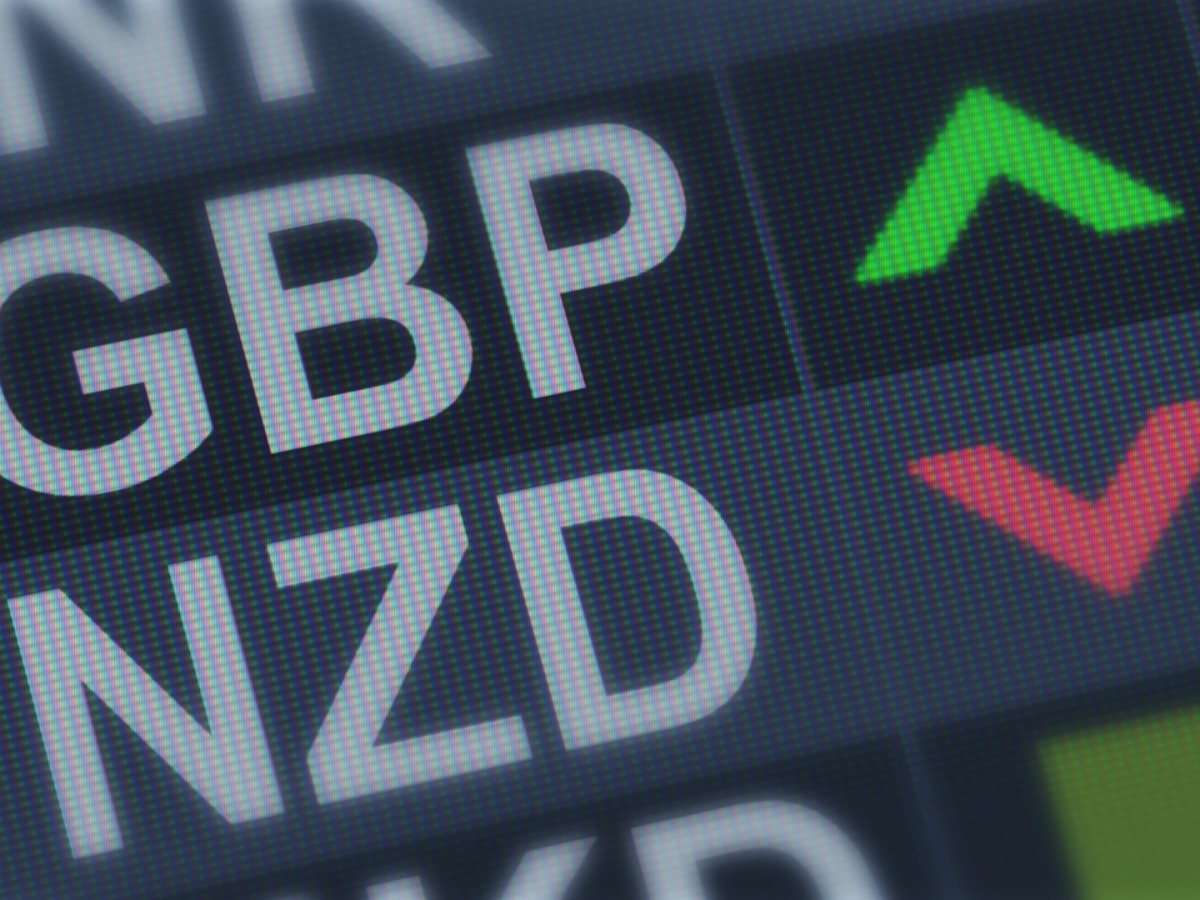

The Pound New Zealand Dollar (GBP/NZD) exchange rate trended upward last week, though the Pound (GBP) faced headwinds against other rival currencies. Meanwhile, the New Zealand Dollar (NZD) was pressured by a lack of domestic data, US Dollar (USD) strength and dovish forecasts for the Reserve Bank of New Zealand (RBNZ).
At the time of writing, GBP/NZD is trading at NZ$2.0732, having climbed by more than 0.3% in the past seven days.
New Zealand Dollar (NZD) Depressed amid RBNZ Uncertainty
The New Zealand Dollar weakened through the course of last week’s session, pressured by bearish forecasts for the Reserve Bank of New Zealand amid a lack of other economic stimuli.
Given expectations that inflation will continue to ease in New Zealand’s economy, the perceived necessity for tight monetary policy is waning; moreover, a sustained contraction in NZ GDP puts pressure upon central bank policymakers to cut interest rates. Nevertheless, the Reserve Bank’s chief economist Paul Conway was noncommittal in a speech given earlier this month, saying:
‘I can’t give you the magic formula of when interest rates are going to decline,” he said. “We look at everything to give us the confidence that inflation will be sustainably back in the band, and we are just not there yet.’
A stronger US Dollar also weakened ‘Kiwi’ exchange rates last week, given NZD’s risk-sensitive nature. Better-than-expected durable goods data and confirmation that the US economy expanded in the first quarter of 2024 buoyed the ‘Greenback’, pressuring its risk-on peers.
Throughout the week, Australian data impressed, potentially capping losses for the New Zealand Dollar: the Antipodean currencies share a close trading relationship. AU consumer confidence climbed in June rather than falling as expected, while May’s monthly CPI indicator exceeded forecasts.
David Bassanese, Chief Economist at Betashares, suggested the CPI data could persuade the Reserve Bank of Australia (RBA) to adopt a hawkish monetary policy:
‘For the RBA, the concern remains that the longer inflation stays high, the greater the risk of it becoming embedded into inflation expectations and ongoing wage and price setting behaviour.’
Pound (GBP) Trades Mixed amid BoE Uncertainty
Pound tailwinds were limited last week despite the currency’s strong performance against the ‘Kiwi’. Central bank uncertainty pressured the currency in the second half of the week, alongside disappointing retail data from the Confederation of British Industry (CBI).
Bullish sentiment on Monday boosted GBP, as weaker-than-forecast US data buoyed the ‘Greenback’s risk-on peers; moreover, the UK’s latest industrial trends release reached a three-month high, prompting upbeat comments from analysts:
Ben Jones, Lead Economist at the CBI, observed:
‘It’s encouraging to see that manufacturers remain confident the economy is heading in the right direction and our June survey suggests that the recovery should broaden out over the summer.’
Into Tuesday, a lack of economic stimuli weighed upon GBP morale, while disappointing data midweek compounded losses. The CBI’s distributive trades index printed below forecasts at –24 amid the effects of unseasonably cold weather and a decline in internet sales.
Uncertainty over the Bank of England (BoE)’s monetary policy stance pressured the Pound further on Wednesday, as the BoE abstain from public commentary ahead of the UK’s general election.
However, Thursday saw Sterling climb as data from online hiring platform Indeed revealed continued wage growth in the UK. Rising wages indicate that that inflationary pressures remain high, increasing pressure upon the BoE to maintain a restrictive monetary policy stance.
On Friday, the Pound faced renewed headwinds. Although economic growth increased beyond forecasts according to the UK’s finalised GDP data, Britain’s current account reading declined by more than predicted, to -£21bn. Additionally, an uptick in US inflation according to the PCE index lent marginal support to the US Dollar, depressing the currency’s rivals.
GBP/NZD Exchange Rate Forecast: Chinese data to Influence Trade?
The Pound New Zealand Dollar exchange rate could trade according to several factors this week. If China’s Caixin manufacturing PMI on Monday reveals a slowdown in expansion, the ‘Kiwi’ could weaken on account of the strong trading relationship between China and New Zealand. Chinese data later in the week could further dent NZD, if service-sector expansion in the world’s second-largest economy likewise slows.
Meanwhile in the UK, house price data could influence Sterling trade, alongside finalised PMI data. If June’s finalised services PMI misses forecasts, GBP is likely to face headwinds.
Australian sales data midweek could boost the ‘Kiwi’ if the release prints as expected; tailwinds in Australian Dollar (AUD) exchange rates invariably buoy the positively correlated NZD. US data may also affect GBP/NZD; a hawkish speech from Federal Reserve Chairman Jerome Powell could support USD alongside improvement in June’s manufacturing activity, depressing the currency’s peers.
On the other hand, declining expansion in the US service sector and rising jobless claims could subdue the ‘Greenback’. Such an outcome would likely lend tailwinds to the US Dollar’s rivals, notably the risk-on ‘Kiwi’.




